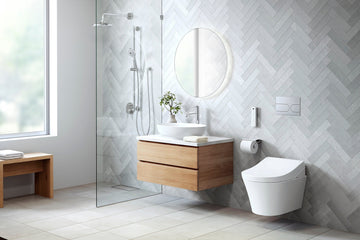In an era where sustainability and resource conservation are at the forefront of industrial innovation, energy efficient toilet technology is emerging as a game-changer in the sanitation industry. With a focus on reducing water usage and energy consumption, these technologies promise to transform the way we think about one of the most essential and ubiquitous fixtures in our homes and workplaces.
Understanding how energy efficient toilet technology works and its benefits is crucial for industry QA professionals who aim to keep up with the latest advancements in sustainable sanitation. This article delves into the intricacies of this technology, offering insights into its development and implementation.

Why the Move Towards Energy Efficiency?
The global push towards sustainability has led industries to adopt energy-efficient solutions that minimize environmental impact while maintaining functionality. In the context of sanitation, the drive is even more pronounced due to the significant amount of water used in traditional toilet systems. According to the Environmental Impact of Bidets, traditional toilets can account for nearly 30% of an average household's water consumption. This staggering statistic highlights the need for innovation.
Key Features of Energy Efficient Toilets
Low-flow Technologies
One of the most significant advancements in energy efficient toilet technology is the introduction of low-flow toilets. These toilets use significantly less water per flush compared to conventional toilets, thereby conserving a precious resource. By using innovative flushing mechanisms, low-flow toilets maintain their effectiveness while reducing water usage by up to 60%.
Dual-flush Systems
Dual-flush systems offer users the option to choose between a full flush and a half flush, depending on the waste being disposed of. This flexibility not only conserves water but also provides users with the control to make eco-friendly choices. The Solar-powered Toilet Systems explore similar technologies that optimize resource use.
Smart Technology Integration
The integration of smart technology into toilets is another aspect of energy efficiency. These toilets can detect usage patterns and adjust their operations accordingly, ensuring optimal water and energy usage. Furthermore, smart toilets often come equipped with features such as automatic flushing and leak detection, preventing water wastage.
The Environmental and Economic Benefits
Implementing energy efficient toilet technology offers a dual benefit: it reduces environmental impact and provides economic savings. For businesses and large facilities, the reduction in water and energy bills can be substantial, making these technologies a wise investment.
According to the Emergency Innovative Toilets, adopting energy-efficient systems can significantly reduce the carbon footprint of sanitation facilities, contributing to global sustainability goals.
Challenges and Considerations
While the advantages of energy efficient toilet technology are clear, there are also challenges to consider. The initial cost of installation can be high, and there may be a learning curve for users unfamiliar with the new systems. However, the long-term savings and environmental benefits often outweigh these initial hurdles.
Industry QA professionals must also ensure that these technologies meet regulatory standards and perform reliably under various conditions. Regular maintenance and updates are crucial to keep the systems running efficiently.
The Future of Energy Efficient Toilets
As technology continues to advance, the potential for further improvements in energy-efficient sanitation systems is vast. Innovations such as Festival Innovative Toilet Solutions showcase the creative approaches being explored to make sanitation more sustainable.
Looking ahead, the integration of renewable energy sources and advanced materials could further enhance the efficiency and sustainability of toilet technologies. Industry professionals must stay informed about these trends to lead the way in implementing the most effective solutions.
Conclusion
The rise of energy efficient toilet technology marks a significant shift in how we approach sanitation. By reducing water and energy use, these systems offer a sustainable solution that benefits both the environment and the economy. As industry QA professionals, staying abreast of these developments is essential to ensure that the technologies we implement not only meet current standards but also pave the way for a more sustainable future.

FAQs
What is energy efficient toilet technology?
Energy efficient toilet technology refers to advancements in toilet systems designed to reduce water and energy consumption, thereby promoting environmental sustainability.
How does a dual-flush system work?
A dual-flush system provides two flushing options: a full flush for solid waste and a half flush for liquid waste, allowing users to conserve water based on their needs.
Are energy efficient toilets more expensive?
While they may have a higher upfront cost, energy efficient toilets often lead to long-term savings on water and energy bills, making them a cost-effective choice over time.
This article contains affiliate links. We may earn a commission at no extra cost to you.






